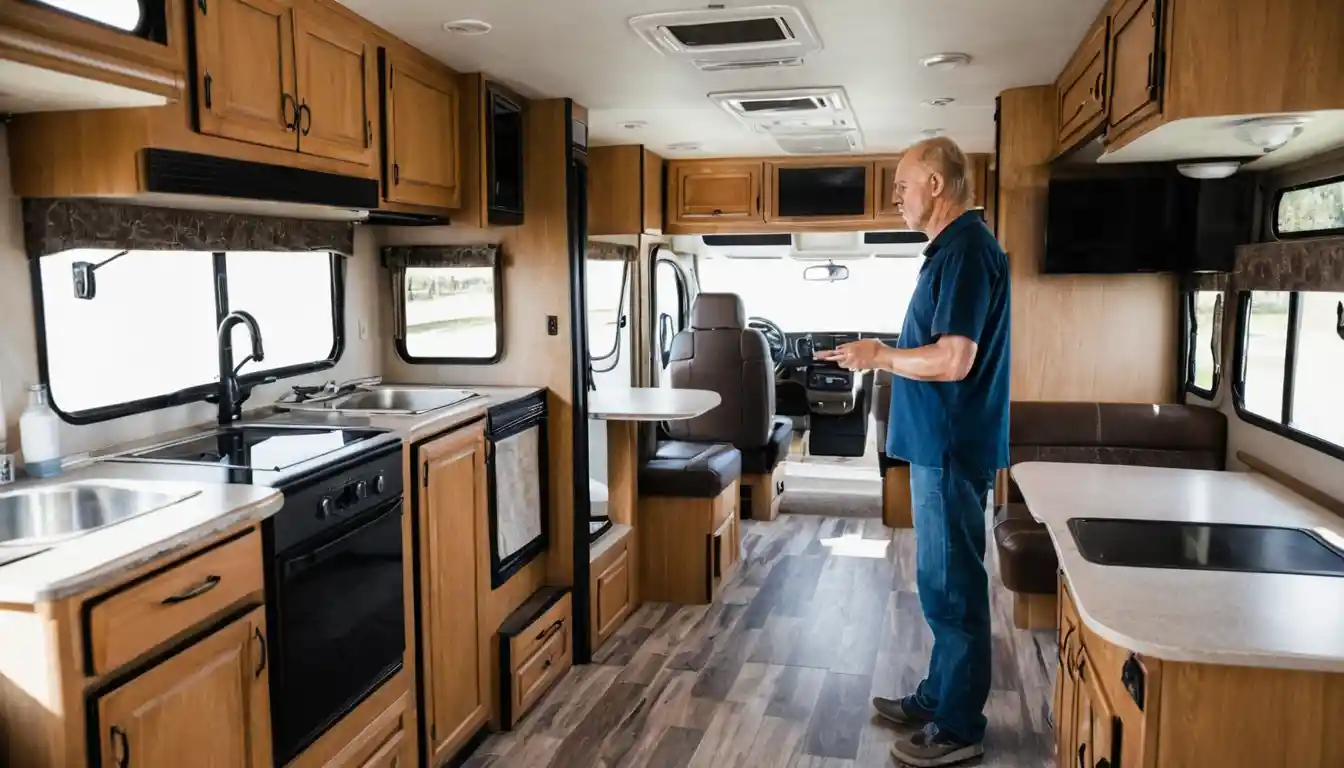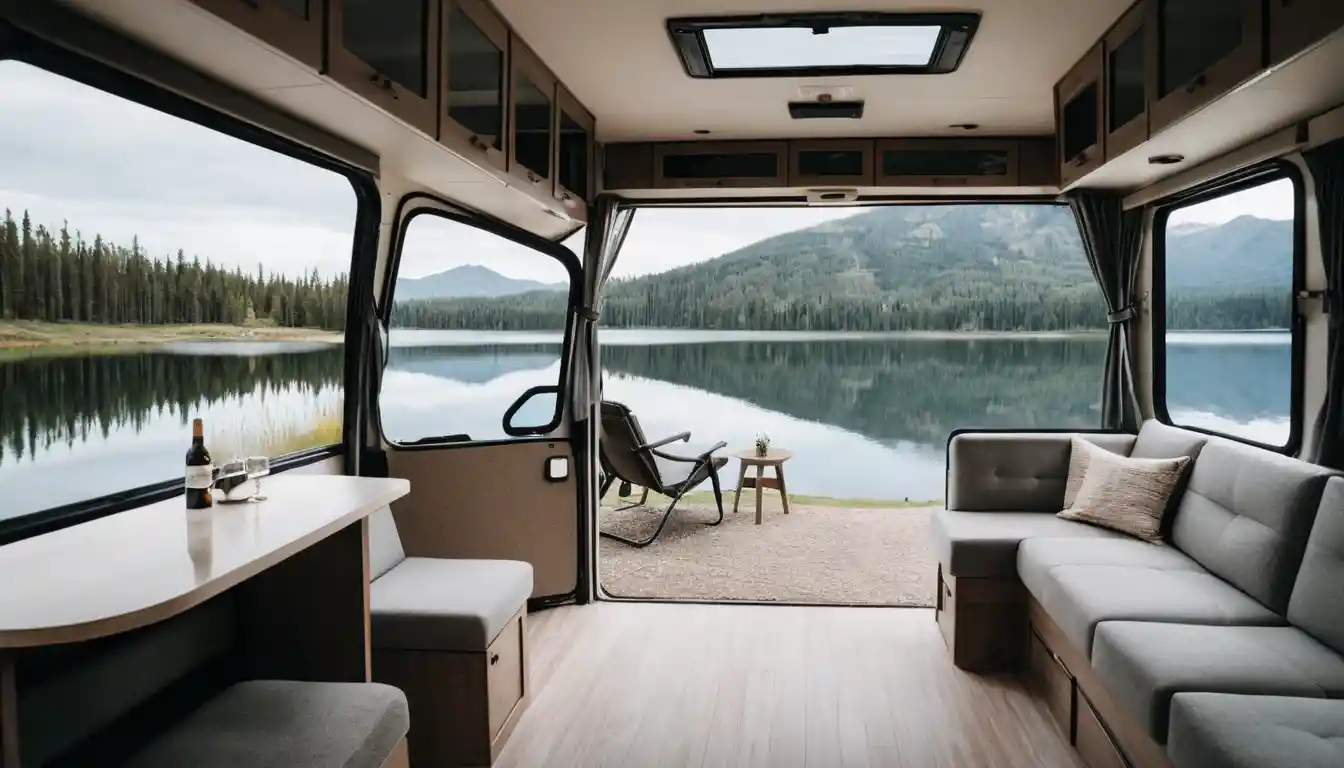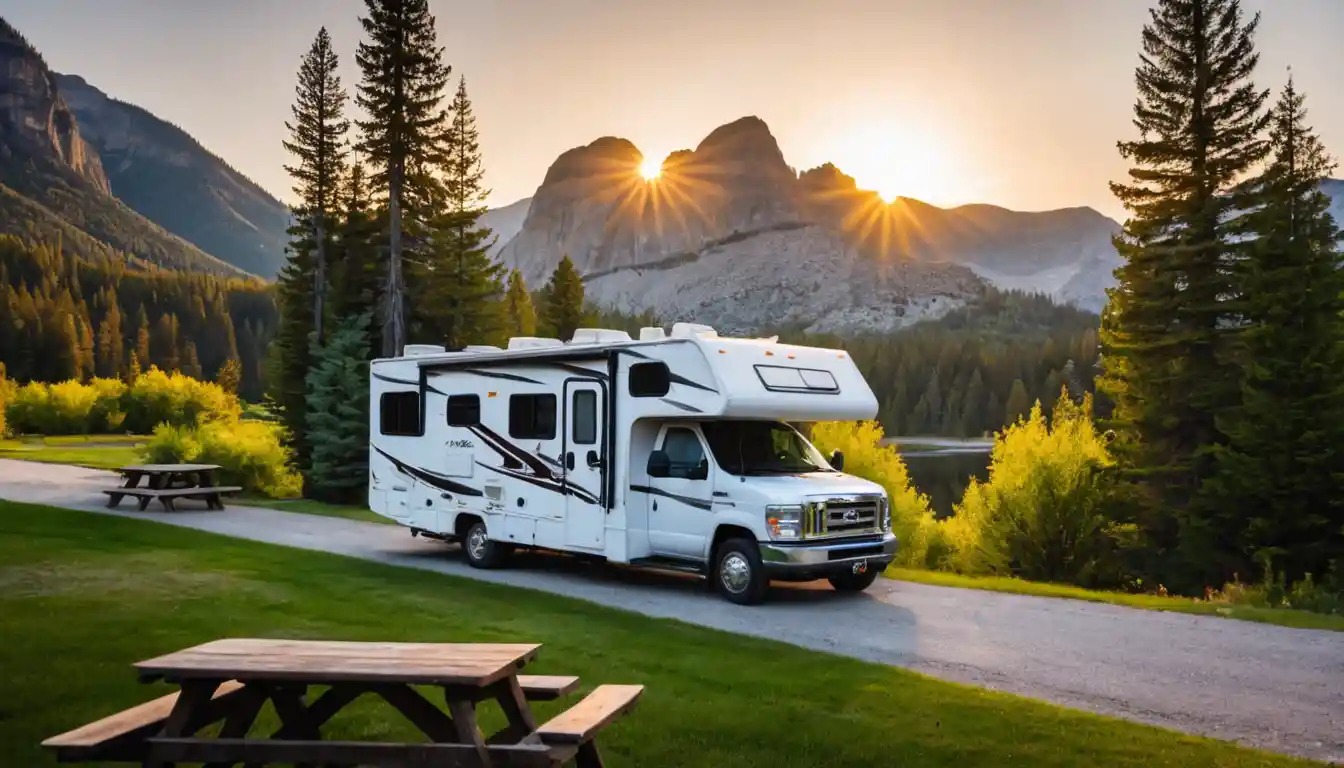Living in an RV is more than just an adventure; it’s a lifestyle choice that offers freedom, flexibility, and an affordable way to explore the world around you. Imagine waking up to a new scenic view every morning, enjoying the freedom to travel at your own pace, and living on your own terms. If you’re curious about how to live in an RV, you’re not alone. More and more people are choosing this alternative way of life, drawn by the promise of less clutter, fewer commitments, and a life on the road.
In this guide, we’ll explore everything you need to know about how to live in an RV, from choosing the right RV to navigating practical challenges like water, electricity, and waste disposal. Whether you’re considering full-time RV living or just looking to escape for a few months, this post will give you the tools to make your RV dream a reality.
Why Choose to Live in an RV?
Living in an RV is not just for weekend adventurers or snowbirds. It’s an ideal choice for people looking to simplify their lives, minimize expenses, or embrace a nomadic lifestyle. Here are a few compelling reasons why you might consider how to live in an RV:
Freedom and Flexibility
One of the biggest draws of RV living is the freedom it offers. You can pack up and head to a new location whenever you feel like it. Want to spend the weekend by the beach or explore the mountains? You can do it all in your RV.
Cost-Effective Living
While buying an RV involves an upfront cost, it can be far cheaper than owning a traditional home, especially when you factor in rent, utilities, and home maintenance. RV living can help you reduce your living expenses significantly, especially if you park in free or low-cost areas like national forests or campgrounds.
Minimalism and Less Clutter
Living in an RV means embracing a minimalist lifestyle. You’ll need to downsize your belongings and focus on what’s truly essential. For many, this simplicity brings a sense of peace and clarity.
Connection to Nature
Whether you’re waking up to the sound of birds chirping in a national park or watching the sunset from your RV door, living in an RV allows you to immerse yourself in nature. It’s a perfect way to reconnect with the environment and escape the noise of city life.
Choosing the Right RV for Full-Time Living
If you’re serious about how to live in an RV, the first step is choosing the right vehicle. There are several types of RVs, and each offers different benefits depending on your needs.
Class-A Motorhomes
Class A motorhomes are large, luxurious RVs that provide ample space for full-time living. They come with modern amenities like full kitchens, bathrooms, and living areas. If you’re looking for comfort and don’t mind a larger RV, a Class A might be the best choice for you.
Class-B Vans
If you prefer something smaller and more nimble, Class B vans (often referred to as campervans) might be ideal. They are easy to drive, fuel-efficient, and perfect for those who want to travel light. While they may not offer as much space as a Class A, they are perfect for minimalist living.
Class-C Motorhomes
Class C motorhomes combine the best of both worlds, offering a middle ground between the luxury of Class A and the compactness of Class B. These RVs often have a distinctive over-cab sleeping area and are great for families or couples who need a bit more space but still want something manageable on the road.

Fifth-Wheel Trailers
If you already own a truck, a fifth-wheel trailer might be a great option. These RVs are spacious and can be towed by a heavy-duty truck. They often come with slide-outs that increase living space and are a good choice for long-term living.
Travel Trailers
Travel trailers are a popular choice for RV enthusiasts looking for a more affordable option. They are smaller than fifth-wheel trailers but can still provide a cozy living space for full-time living. They are easy to tow with a variety of vehicles, making them a flexible choice for many.
When choosing an RV, consider factors such as size, budget, towing capacity, and the amenities you’ll need. It’s also important to think about where you’ll be traveling and how much time you plan to spend on the road.
How to Live in an RV: Essential Considerations
Once you’ve selected the right RV for your needs, the next step is to tackle the practical aspects of living in an RV full-time. There are several key factors you’ll need to consider to ensure your RV lifestyle is both comfortable and sustainable.
1. Water, Electricity, and Waste Disposal
Living in an RV means you’ll need to manage your own utilities, which can be a bit different from living in a traditional home. Here’s a breakdown of the essentials:
Water: RVs come with fresh water tanks that you can fill up at campgrounds or designated filling stations. You’ll need to monitor your water usage carefully, as it’s limited. Many RVers also use portable water filters to improve water quality.
Electricity: Most RVs run on a 12-volt battery system, but you can plug into shore power at campsites or RV parks for 110-volt AC electricity. For off-grid living, you may want to invest in solar panels or a generator to keep your lights, appliances, and devices running.
Waste Disposal: RVs have a holding tank for waste (black water), as well as a grey water tank for wastewater from sinks and showers. You’ll need to dump your tanks regularly at a designated dump station. Many RVers use portable waste bags or composting toilets for more eco-friendly waste disposal.
2. Storage and Organization
Living in an RV requires a keen sense of organization. Space is limited, so you’ll need to downsize and be creative with your storage solutions. Here are a few tips:
Use Multi-Function Furniture: Choose furniture that serves multiple purposes, such as a bed that doubles as a couch or a table with storage compartments.
Maximize Vertical Space: Install shelves, hooks, and storage bins to take advantage of every inch of available space. Consider using under-bed storage and overhead compartments for less frequently used items.
Downsize Your Belongings: Before hitting the road, take time to go through your possessions and pare down to the essentials. Remember, RV living is about simplicity, so only keep what’s necessary and practical.
3. Finding Places to Park
One of the most common questions when it comes to how to live in an RV is where you’ll park. You have several options:
RV Parks and Campgrounds: These offer hookups for water, electricity, and sewage, making them ideal for longer stays. Some campgrounds even have Wi-Fi and laundry facilities.
Boondocking (Off-Grid Camping): If you want to get off the beaten path, boondocking is an excellent option. This involves camping without hookups, often on public lands or in remote areas. You’ll need to rely on solar power, a generator, and your RV’s water and waste tanks.
Private Property: Some RVers park on friends’ or family members’ land, but be sure to get permission and follow local laws regarding parking and zoning.
4. Budgeting for RV Life
Living in an RV can be a lot more affordable than living in a traditional home, but it’s important to set a budget and plan for expenses. Common costs include:

RV Purchase or Rent: Whether you buy or rent, there will be an initial cost involved.
Fuel: Gas or diesel can add up quickly, especially if you’re driving long distances.
Maintenance and Repairs: Just like a car, an RV requires regular maintenance and occasional repairs.
Campground Fees: Depending on where you stay, fees for campgrounds and RV parks can vary.
Food and Supplies: You’ll still need to budget for food, toiletries, and other essentials.
Planning a detailed budget before you start living in an RV will help you avoid any financial surprises down the road.
How to Live in an RV: Finding a Balance
Living in an RV is an exciting and unique experience, but it does require adjustments. You’ll need to find a balance between adventure and practicality, freedom and responsibility. By choosing the right RV, staying organized, and planning ahead for utilities and budgeting, you’ll be well on your way to living the RV life you’ve always dreamed of.
Frequently Asked Questions
What are the benefits of living in an RV?
Living in an RV offers a variety of benefits, including the freedom to travel at your own pace, the ability to explore new places, and a more affordable lifestyle compared to traditional homeownership. RV living also promotes a minimalist lifestyle, allowing you to declutter and prioritize only the essentials, while connecting more deeply with nature.
How do I choose the right RV for full-time living?
When selecting an RV for full-time living, it’s important to consider your needs, budget, and travel plans. Some RVs offer more space and comfort, like Class A motorhomes, while others are more compact and easier to maneuver, like Class B vans. Think about factors such as towing capacity, available amenities, and how much time you plan to spend on the road.
How do I manage water, electricity, and waste while living in an RV?
Managing utilities in an RV is essential for comfortable living. Most RVs come with fresh water tanks, which need to be filled periodically at designated stations. Electricity is usually provided through a 12-volt battery system, with shore power available at campsites. For waste, RVs have black and grey water tanks that need to be emptied regularly at dump stations.
What should I do to stay organized in a small RV space?
Organization is key when living in an RV, as space is limited. Consider multi-functional furniture, such as beds that double as couches, and use vertical space for storage. Downsizing your belongings and only keeping what is essential can also help keep things organized and make the most of your living area.
How much does it cost to live in an RV full-time?
The cost of full-time RV living can vary depending on factors like the type of RV you choose, fuel expenses, maintenance, campground fees, and food costs. While RV living can be more affordable than owning a traditional home, it’s important to budget for upfront costs, regular maintenance, and travel expenses to ensure a sustainable lifestyle.
Conclusion
Now that you know the ins and outs of how to live in an RV, it’s time to take the leap. Whether you’re seeking freedom, adventure, or a more minimalist lifestyle, RV living offers a world of possibilities. With careful planning, the right mindset, and a sense of adventure, you can embark on an unforgettable journey on the road.
Are you ready to embrace the RV lifestyle? Start by choosing your RV, organizing your space, and mapping out your first destinations. The road awaits – and with it, a life of adventure and freedom.





